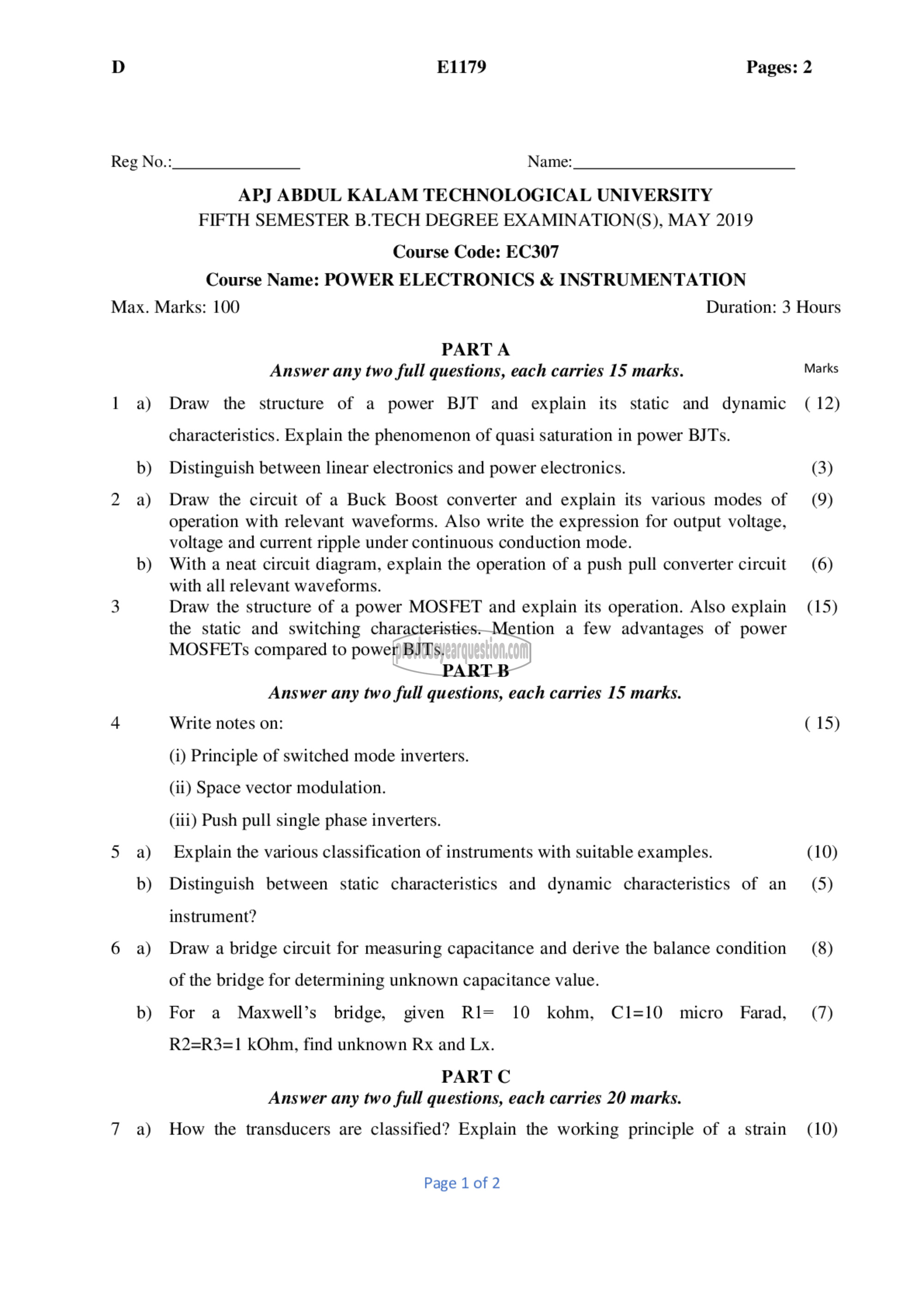APJ ABDUL KALAM TECHNOLOGICAL UNIVERSITY Previous Years Question Paper & Answer
Semester : SEMESTER 5
Subject : Power Electronics & Instrumentation
Year : 2019
Term : MAY
Scheme : 2015 Full Time
Course Code : EC 307
Page:1
D E1179 Pages: 2
Reg No.: Name:
APJ ABDUL KALAM TECHNOLOGICAL UNIVERSITY
FIFTH SEMESTER B.TECH DEGREE EXAMINATION(S), MAY 2019
Course Code: EC307
Course Name: POWER ELECTRONICS & INSTRUMENTATION
Max. Marks: 100 Duration: 3 Hours
PARTA
Answer any two full questions, each carries 15 marks. Marks
1 a) Draw the structure of a power BJT and explain its static and dynamic (12)
characteristics. Explain the phenomenon of quasi saturation in power BJTs.
b) Distinguish between linear electronics and power electronics. (3)
2 a) Draw the circuit of a Buck Boost converter and explain its various modes of (9)
operation with relevant waveforms. Also write the expression for output voltage,
voltage and current ripple under continuous conduction mode.
b) With a neat circuit diagram, explain the operation of a push pull converter circuit (6)
with all relevant waveforms.
3 Draw the structure of a power MOSFET and explain its operation. Also explain (15)
the static and switching characteristics. Mention a few advantages of power
MOSFETs compared to power BJTs.
PARTB
Answer any two full questions, each carries 15 marks.
4 Write notes on: (15)
(i) Principle of switched mode inverters.
(ii) Space vector modulation.
(iii) Push pull single phase inverters.
5 പല Explain the various classification of instruments with suitable examples. (10)
b) Distinguish between static characteristics and dynamic characteristics of an (5)
instrument?
6 a) Draw a bridge circuit for measuring capacitance and derive the balance condition (8)
of the bridge for determining unknown capacitance value.
b) For a Maxwell’s bridge, given RI= 10 kohm, 01-10 micro Farad, (7)
R2=R3=1 kOhm, find unknown Rx and Lx.
PART ட்
Answer any two full questions, each carries 20 marks.
7 a) How the transducers are classified? Explain the working principle of a strain (10)
Page 1 of 2
